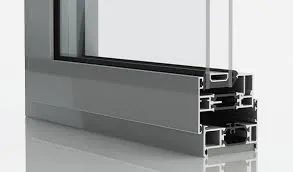ornamental cast iron
The Timeless Allure of Ornamental Cast Iron
Ornamental cast iron, a material steeped in history, has remained a favorite in architectural design and artistic expression since the 19th century. Known for its durability, versatility, and intricate designs, ornamental cast iron showcases the remarkable craftsmanship of the era while offering contemporary applications. This article delves into the significance, characteristics, and modern uses of ornamental cast iron.
Historical Significance
The rise of ornamental cast iron coincided with the Industrial Revolution, a period marked by rapid industrialization and urbanization. As cities expanded, so did the need for robust yet aesthetically pleasing materials to define public spaces and private properties. Cast iron emerged as a solution, with its ability to be molded into complex shapes and designs. Architectural features, such as railings, balconies, and facades, began to incorporate this material, elevating the ordinary to the extraordinary.
In the United States, the use of ornamental cast iron can be traced back to the mid-1800s, with significant developments in cities like New York and New Orleans. The famous cast-iron storefronts of SoHo and the ornate iron balconies in the French Quarter are testament to its enduring appeal. Manufacturers and artisans specializing in ornamental cast iron flourished during this period, creating everything from decorative fence posts to elaborate garden furniture.
Characteristics of Ornamental Cast Iron
One of the defining features of ornamental cast iron is its incredible strength and longevity. Unlike other materials, cast iron resists weathering and environmental wear, making it ideal for outdoor decorations and functional elements. Its ability to be cast into intricate patterns allows for a wide range of artistic expression, from delicate floral motifs to intricate geometric designs. This versatility means that cast iron can seamlessly blend into various architectural styles, from Victorian to modern.
Moreover, the patina that develops on cast iron over time adds to its charm. The natural aging process gives each piece a unique character, enhancing its aesthetic value. Cast iron can also be painted or coated, offering options for customization to fit contemporary color palettes and design preferences.
ornamental cast iron

Modern Applications
While ornamental cast iron may be rooted in history, it has found a renewed purpose in modern design. Designers and architects are increasingly incorporating ornamental cast iron into contemporary buildings and interiors. It is used in stair railings, gates, light fixtures, and garden sculptures, often juxtaposed with modern materials such as glass and steel to create striking contrasts that celebrate both history and innovation.
One area where ornamental cast iron has seen a resurgence is in landscaping and outdoor spaces. Garden designers utilize ornamental cast iron for planters, benches, and trellises, providing a touch of timeless elegance to parks and private gardens. As eco-consciousness grows, the sustainability of cast iron—being recycled and repurposed—adds to its appeal as a material of choice.
Conservation and Preservation
Due to its historical and artistic value, the conservation of ornamental cast iron structures is critical. Many historic districts and buildings are protected by preservation laws, which often include maintaining the original cast iron features. Restoration projects can be both rewarding and challenging, as the aim is to honor the craftsmanship of the past while ensuring the longevity of the materials. Techniques such as sandblasting, rust prevention, and careful repainting are employed to bring these pieces back to their former glory.
Conclusion
Ornamental cast iron stands as a beautiful testament to human ingenuity and artistry. Its rich history, combined with its strength, versatility, and aesthetic appeal, ensures its continued relevance in both historical and modern contexts. As designers seek to harmonize the old with the new, ornamental cast iron remains a bridge between past and present, inviting us to appreciate its beauty in an ever-evolving world. Whether as a statement piece in a garden or an architectural feature in a modern building, ornamental cast iron captivates the imagination and reminds us of the timeless nature of craftsmanship.
-
Wrought Iron Components: Timeless Elegance and Structural StrengthNewsJul.28,2025
-
Window Hardware Essentials: Rollers, Handles, and Locking SolutionsNewsJul.28,2025
-
Small Agricultural Processing Machines: Corn Threshers, Cassava Chippers, Grain Peelers & Chaff CuttersNewsJul.28,2025
-
Sliding Rollers: Smooth, Silent, and Built to LastNewsJul.28,2025
-
Cast Iron Stoves: Timeless Heating with Modern EfficiencyNewsJul.28,2025
-
Cast Iron Pipe and Fitting: Durable, Fire-Resistant Solutions for Plumbing and DrainageNewsJul.28,2025
-
 Wrought Iron Components: Timeless Elegance and Structural StrengthJul-28-2025Wrought Iron Components: Timeless Elegance and Structural Strength
Wrought Iron Components: Timeless Elegance and Structural StrengthJul-28-2025Wrought Iron Components: Timeless Elegance and Structural Strength -
 Window Hardware Essentials: Rollers, Handles, and Locking SolutionsJul-28-2025Window Hardware Essentials: Rollers, Handles, and Locking Solutions
Window Hardware Essentials: Rollers, Handles, and Locking SolutionsJul-28-2025Window Hardware Essentials: Rollers, Handles, and Locking Solutions -
 Small Agricultural Processing Machines: Corn Threshers, Cassava Chippers, Grain Peelers & Chaff CuttersJul-28-2025Small Agricultural Processing Machines: Corn Threshers, Cassava Chippers, Grain Peelers & Chaff Cutters
Small Agricultural Processing Machines: Corn Threshers, Cassava Chippers, Grain Peelers & Chaff CuttersJul-28-2025Small Agricultural Processing Machines: Corn Threshers, Cassava Chippers, Grain Peelers & Chaff Cutters












